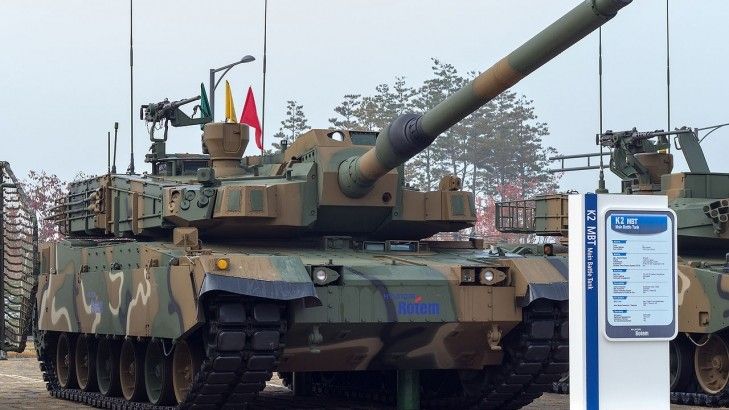Strona główna
Media: Korean Industry Interested in the Polish MBT Programme

Korean defence industry is aiming to participate in the Polish “Wilk” (Wolf) new generation main battle tank programme that is to begin in the first half of this year, “Korea Times” reports. The daily notes that the industrial cooperation constitutes an important part of the proposal that has been prepared by Korean company Hyundai Rotem.
According to Korea Times, Hyundai Rotem is willing to seek agreement concerning the development of a new main battle tank. The above concerns a proposal of joint development and manufacturing of “K2 Black Panther class tanks”. Hyundai Rotem representative, told Korea Times that “[T]he official project bidding is expected to be announced in the first half of this year and we definitely will take part in the process. The total project is said to be divided into two stages to produce a total of 800 tanks”. The daily reports that the exact amounts involved are unknown but the newspiece published mentions the sum of USD 9 billion.
The Korean media are most probably referring to the “Wilk” new generation MBT programme. Within the framework of this initiative, the Polish MoD is willing to procure a new generation main battle tanks that would replace the T-72M1 and PT-91 Twardy platforms operated by the Polish military now. Formally, the analytical/conceptual efforts related to the Wilk program have begun back in 2017. Wilk programme is one of the priorities defined by the Technical Modernization Plan covering the term until the year 2035. The document has been signed in the autumn last year.
The Polish Ministry of Defence has been emphasizing the fact that it would be driven to establish a broad industrial collaboration with maximum involvement of the domestic industry. The Strategic Defence Review of 2017 document also mentioned development of the new MBT within the context of an international, collaborative undertaking.
In that context, the Polish Ministry of Defence made numerous attempts to join the MGCS future European MBT programme and requested to accelerate this project. So far, however, the attempts made have in that direction not been successful. Furthermore, the new generation European MBT is to become operational in 2035 or later, to become a replacement of the Leopard 2 and Leclerc platforms that have undergone a deep modernization. Meanwhile, Poland needs to replace its post-Soviet vehicles much earlier, as the planned modification of the T-72 platform is only expected to be a gap-filler.
This is why other options are being considered here as well. Hyundai Rotem’s proposal can be found among them, assuming varied options of industrial collaboration and broad cooperation with regards to the K2PL MBT design. The tank in question is expected to be manufactured in Poland, with major share of work assigned to the PGZ Group. Chief of the General Staff, General Rajmund Andrzejczak, got acquainted with the K2 MBT last year, during his visit to South Korea.
Most probably, the Wilk programme, assuming that the current and planned structure of the military would be maintained (including establishment of the 18th Mechanized Division) could potentially involve acquisition of 500 or more vehicles. This is the quantity needed to replace the T-72M1 and PT-91 platforms. Along with 250 Leopard 2 MBTs, the Polish Armed Forces would have around 800 tanks at its disposal.
